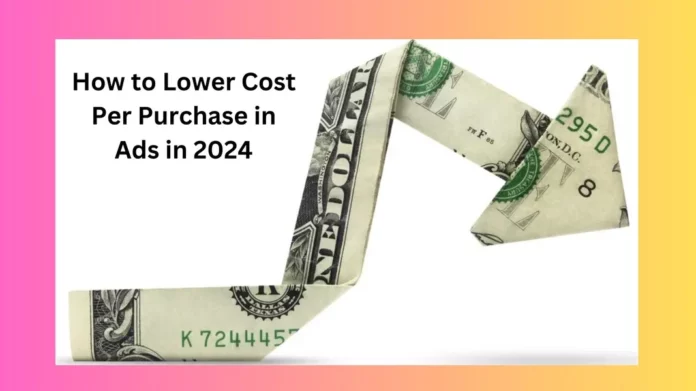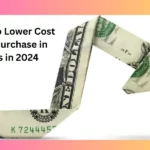Introduction:
In the dynamic realm of digital advertising, optimizing cost per purchase (CPP) remains a perpetual challenge for marketers. As we navigate through 2024, the landscape continues to evolve, presenting both new opportunities and complexities. In this article, we delve into actionable strategies and insights to effectively reduce your cost per purchase in advertising campaigns.
Understanding Cost Per Purchase (CPP):
Before diving into optimization tactics, let’s grasp the essence of cost per purchase. CPP refers to the expenditure incurred for each conversion or acquisition generated through your advertising efforts. Whether you’re aiming for online sales, app installations, or lead generation, lowering CPP is pivotal for maximizing return on investment (ROI).
Harnessing Data Insights for Targeting:
In 2024, data-driven precision reigns supreme in advertising. Leverage advanced analytics tools to identify high-value audience segments. By understanding demographics, interests, and behaviors, you can tailor your campaigns with laser-like precision, thereby reducing wastage and optimizing CPP.
Crafting Compelling Ad Creatives:
Engaging ad creatives are the lifeblood of any successful campaign. In a sea of digital noise, your content must stand out and resonate with your target audience. Embrace creativity, experiment with formats, and incorporate captivating visuals to drive clicks and conversions. Remember, a well-crafted message can significantly impact your CPP by boosting engagement rates.
Optimizing Landing Pages for Conversions:
Your landing page serves as the gateway to conversions. Ensure seamless user experience, fast loading times, and clear call-to-action (CTA) prompts. Conduct A/B testing to refine page elements and maximize conversion rates. A high-converting landing page not only enhances user satisfaction but also contributes to lowering your CPP by improving conversion efficiency.
Embracing Automation and AI Technologies:
In the era of automation and artificial intelligence (AI), harnessing these technologies can revolutionize your advertising endeavors. AI-powered algorithms can optimize bidding strategies, ad placements, and audience targeting in real-time, leading to enhanced campaign performance and lower CPP. Embrace automation tools to streamline your workflow and unlock new efficiencies.
Building Strategic Partnerships:
Collaboration is key to success in the advertising ecosystem. Forge strategic partnerships with publishers, influencers, or complementary brands to expand your reach and access new audiences. By tapping into existing networks, you can amplify your message and drive down acquisition costs through shared resources and mutual promotion.
Monitoring and Iterating for Continuous Improvement:
The journey to lower CPP doesn’t end with the implementation of tactics. Continuous monitoring and iteration are essential for staying ahead of the curve. Analyze performance metrics, identify areas for improvement, and adapt your strategies accordingly. By remaining agile and responsive, you can fine-tune your campaigns and achieve sustained cost optimization.
Conclusion:
In conclusion, navigating the evolving landscape of digital advertising in 2024 requires a multifaceted approach. By harnessing data insights, crafting compelling creatives, optimizing landing pages, embracing automation, fostering partnerships, and adopting a mindset of continuous improvement, you can effectively lower your cost per purchase and drive greater ROI from your advertising efforts.
FAQs:
What role does audience segmentation play in lowering CPP?
Audience segmentation enables targeted messaging, reducing ad spend on irrelevant audiences and improving conversion rates, thereby lowering CPP.
How can small businesses compete with larger competitors in lowering CPP?
Small businesses can leverage niche targeting, creative content strategies, and agile experimentation to optimize campaigns and achieve competitive CPP levels.
3. Are there any industry-specific tactics for lowering CPP?
Industry-specific tactics may vary, but common strategies include leveraging seasonality, trends, and consumer behavior insights to tailor campaigns for maximum efficiency.
4. Is there a universal formula for calculating CPP?
CPP can be calculated by dividing total advertising spend by the number of conversions generated within a specified period. However, nuances such as attribution models and campaign objectives may influence the calculation.
5. What role does ad quality score play in CPP optimization?
Ad quality score, determined by factors such as relevance, engagement, and landing page experience, directly impacts ad performance and can influence CPC and CPP. Optimizing ad quality can lead to lower acquisition costs and improved campaign ROI.















